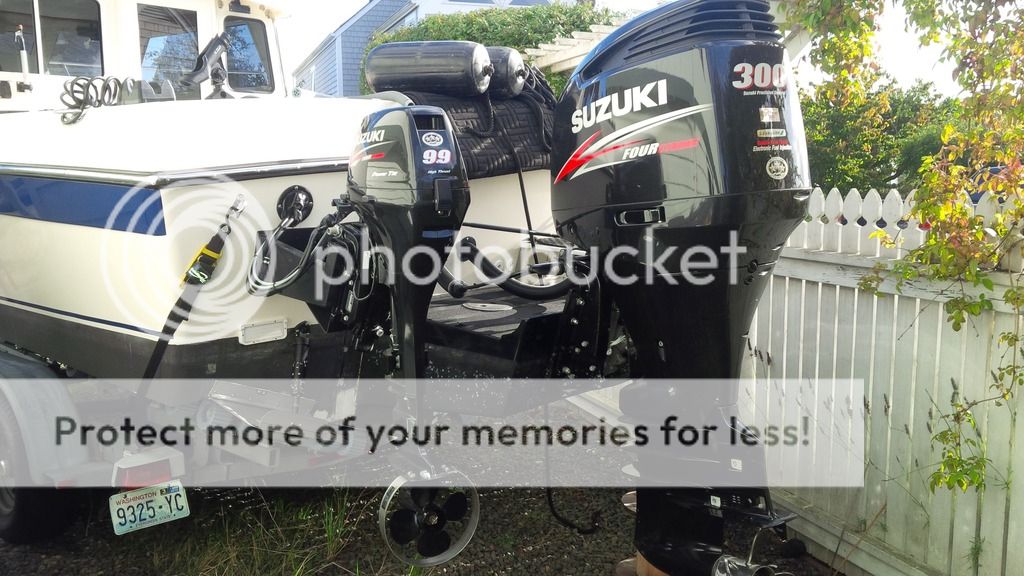Sharphooks
Well-Known Member
Thought I'd do a brief thread on a recent modification I had done to an offshore bracket.
Boat---24 foot Skagit Orca
Power: Suzuki DF300
The depth of the original bracket was approx. 24" with approx 36" set-back. Mounted to the bracket: the DF300 with a 30" Leg
Because the motor sat so deep in the water I was experiencing huge prop slip and lots of water commotion behind the boat at any speed other then WOT (soaked the cowling continually at cruise speed)
In response to an earlier post about this problem, there were recommendations to mount a jack plate to the existing bracket.
I considered that but finally settled on modifying the existing bracket so it extended to the bottom of the hull
Here's the original bracket:

Here's a pic of the modified bracket---I had hoped this approach would add floatation under the DF300 and allow the ventilation plate to be properly placed in relation to the bottom of the hull...yes, I also splurged on a Honda BF15---That Suzuki 9.9 was sufficient but the design was stupid---no way to flush the salt out with ear muffs unless I placed duct tape over the water intake ports (???!!)--what were they thinking?

Spent a pile of hours preparing for painting---coat of zinc chlorate etching paint, then multiple coats of anti-fouling paint (the boat is wet-slipped so that was the necessary evil )

Final paint job before launching her:

Boat---24 foot Skagit Orca
Power: Suzuki DF300
The depth of the original bracket was approx. 24" with approx 36" set-back. Mounted to the bracket: the DF300 with a 30" Leg
Because the motor sat so deep in the water I was experiencing huge prop slip and lots of water commotion behind the boat at any speed other then WOT (soaked the cowling continually at cruise speed)
In response to an earlier post about this problem, there were recommendations to mount a jack plate to the existing bracket.
I considered that but finally settled on modifying the existing bracket so it extended to the bottom of the hull
Here's the original bracket:

Here's a pic of the modified bracket---I had hoped this approach would add floatation under the DF300 and allow the ventilation plate to be properly placed in relation to the bottom of the hull...yes, I also splurged on a Honda BF15---That Suzuki 9.9 was sufficient but the design was stupid---no way to flush the salt out with ear muffs unless I placed duct tape over the water intake ports (???!!)--what were they thinking?

Spent a pile of hours preparing for painting---coat of zinc chlorate etching paint, then multiple coats of anti-fouling paint (the boat is wet-slipped so that was the necessary evil )

Final paint job before launching her:

Last edited:


